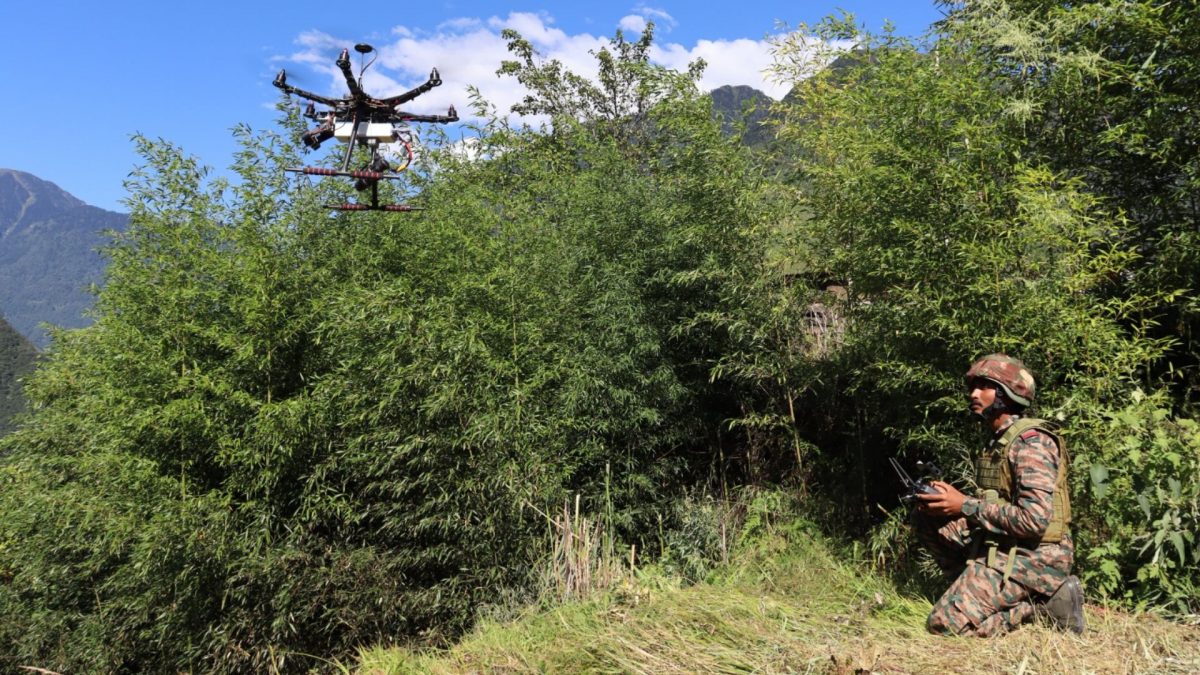The high-altitude drill was a masterclass in next-generation combat, aggressively testing the Army’s ability to seamlessly integrate offensive drones and deploy cutting-edge counter-drone strategies in the challenging Himalayan terrain.
The Indian Army’s Spear Corps, operating under the Eastern Command, conducted Exercise ‘Drone Kavach’ from September 25 to 28 in the forward areas of Eastern Arunachal Pradesh, according to an official release.
The four-day exercise focused on enhancing the Army’s preparedness for next-generation drone warfare, while also testing cutting-edge drone technologies and counter-drone systems in realistic battlefield conditions.
Personnel from the Indo-Tibetan Border Police (ITBP) stationed in forward areas also took part in the exercise. A range of tactical manoeuvres and combat scenarios were practiced, simulating multi-domain operations in a technology-driven environment, the release said.
Key elements of the exercise included rehearsals of target acquisition, active and passive counter-drone tactics, and high-precision target neutralisation, all conducted under simulated battlefield conditions. Newly formed unit-level teams were also involved in developing Tactics, Techniques, and Procedures (TTPs) aligned with operational goals and deployment philosophies
Boost to the Indian Army
Insights gained during Exercise Drone Kavach are expected to further refine the Indian Army’s understanding of future warfare environments, particularly those involving drone-based threats, and enhance its ability to respond effectively.
The Army said the exercise brings to light its ongoing efforts to modernise and absorb new technologies, reinforcing its commitment to achieving operational excellence.
In a separate achievement, soldiers from the Indian Army’s Spear Corps successfully summited Mount Gorichen (6,488 metres)—Arunachal Pradesh’s highest climbable peak—on September 19.
According to an official release, the mountaineering expedition was aimed at promoting adventure and resilience, while also showing the Army’s dedication to preserving the natural environment of the region.
Braving harsh winds, icy terrain, and thin air at high altitude, the team demonstrated exceptional endurance and teamwork, ultimately conquering what is often called the “Roof of Arunachal.”
End of Article

)
)
